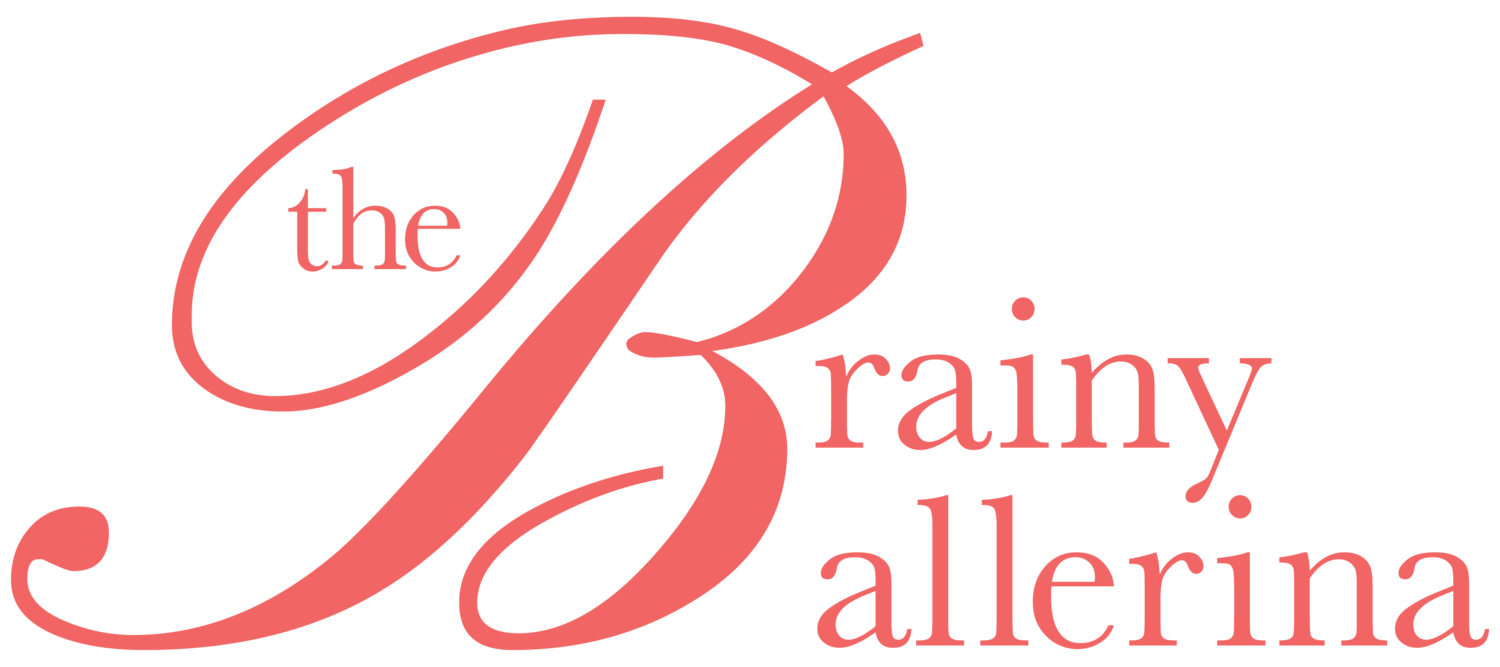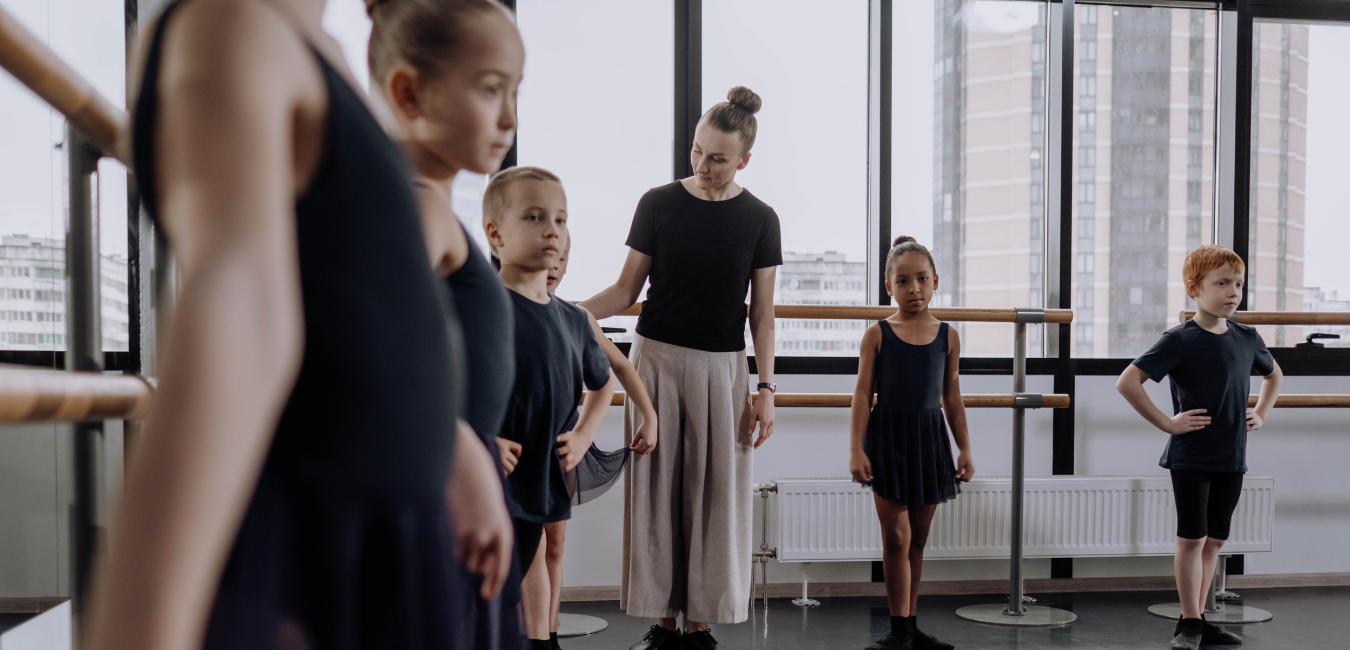3 Top DETips for Teaching a Meaningful Ballet Class of Combined Levels and Ages
Ballet dancers, or any genre of dancer, often find themselves in positions of teaching, whether that be at a studio for additional income or in rehearsal teaching a new performance role to an understudy. These teaching opportunities offer dancers the ability to demonstrate their knowledge and share that knowledge with the next generation of dancers.
However, it can be difficult for a seasoned dancer to break down a step that seems intuitive or elementary. Being able to teach multiple levels and ages of dancers is a skill set that takes time to develop, but we have some great tips to help you along the way!
Some of these tips may seem obvious:
Plan your classes ahead of time
Don’t be afraid to split your classes into groups
Allow your students to learn from each other, too
But, let’s talk about how they directly relate to teaching multiple levels and ages.
1. Plan your classes ahead of time
If you run into your classes with barely a lesson plan for the day, you’re going to be flustered from the beginning. It may be easy to come up with combinations on the spot, but if you’re worried about what the next step in the phrase is going to be, then you’re not able to pay as much attention to your students as they’re learning the phrase.
If you take the time to prepare combinations ahead of time, then as you’re teaching the steps, you can actually assess your students’ success and make changes as you go to help them succeed.
Your students can pick up on your preparedness. When you can take the time to prepare your classes, then your students feel like you’ve thought about them other than just in that 60 minutes (or however long your classes may be).
2. Don’t be afraid to split your classes into groups
Oftentimes we don’t want to separate our students into groups. We fear they will automatically assign a “lesser than” group and a “more advanced” group. While this might be true to an extent, this model has some positives, too.
By creating various groups with different objectives, we teach our students to evaluate success based on their own abilities and not someone else's. If they’re in a completely different group, then they are less likely to compare themselves than if they were all in one big group practicing the same step. It might also be a good motivator for them and encourage them to keep striving for their best.
Another positive reinforcement by using groups is reducing stress among the students. Try having three different groups traveling across the floor. One group’s objective is single pirouettes, the next works on double pirouettes, and the third works triples. We all know, “a clean single is better than a messy double,” but the reality is if a student is in a group of all triples and they’re just working on singles, it can be stressful to stand out in that way. They feel ‘singled out’ (no pun intended!)
Creating a structured environment with clear objectives based on realistic ability gives the students a safe space to experiment.
3. Allow your students to learn from each other, too.
As stated in “How To Become A Dance Teacher: The Ultimate Guide,” as the teacher and person in front of the room, we are expected to reach every student in the room. Part of being an educator is providing multiple examples and offering different perspectives for the same goal; however, another successful tactic is allowing the students to work together to explain different concepts.
Begin by partnering a newer student with a veteran. They are generally closer in age and can relate to each other sometimes easier than you can as their instructor. Plus, the conversation is often more casual and relaxed being peer-to-peer.
The students will retain the information better if they are the ones who have to explain it. Plus, you are helping create relationships among the students that might not have been there before.
We encourage you to always try new ideas in your classes and see what works for you. We’re all different and our classes all need different approaches but hopefully, these 3 tips give you a jumping-off point.
Bonus: At Dance Ed Tips, we fully believe that making dance FUN with dance-related games and activities helps increase retention, longevity, and success of each dancer. Incorporating dance games into your classes can help your students grow at their own pace and encourage creativity and expressiveness. Check out these favorite products:
Online Dance Games for Zoom (These are great to use in person, too!)
Meet the Author
Katie Wilber (she/her) is the Communications Coordinator at Dance Ed Tips as of 2021. Katie is also a dance teacher at Carroll County Dance Center (Virginia) and an Arts & Entertainment Marketing Specialist for various organizations across the country. Her performing career with Inlet Dance Theatre (Ohio) most notably includes performing at Jacob’s Pillow as part of the Inside/Out Series in 2016 and performing the leading role in the internationally renowned production of “What Do You Do With An Idea?” at the International Performing Arts for a Youth Conference in Philadelphia in 2020. In Ohio, Katie also established the Newton D. Baker Dance Program and Student Dance Ensemble in 2017 and oversaw the program for 3 years. If Katie isn't teaching or working inside arts administration, she is probably playing with her dogs, scouting out the best cup of coffee, or dancing somewhere outside!
Learn more about Dance Ed Tips
Dance Ed Tips is a dance education resource company whose products and services are used by thousands of teachers and students in 25 countries and all 50 states. Dance Ed Tips is known for its high-quality teaching resources, including decks of cards, posters, curriculum kits and bundles, games, and more. Comprised of a team of veteran dance teachers, the products are intentionally designed to be easy to implement, effective, and, most importantly, research-based. All DET materials have been piloted in dance studios of all types to assure they work with “real” dancers who have given them a big thumbs-up! Dance Ed Tips’ work has been featured in Dance Teacher Magazine, Dance Studio Life Magazine, Dance Business Weekly, and much more. To learn more, visit www.danceedtips.com.
If you liked this post, you might also like:





